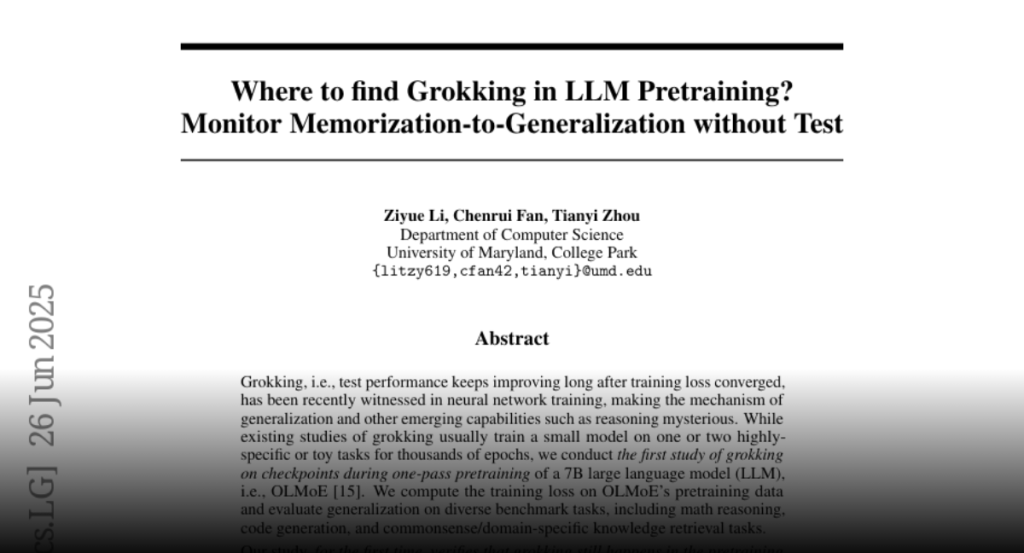Grokking, or continued test performance improvement after training loss convergence, is observed during pretraining of a large language model, showcasing a memorization-to-generalization process.
Grokking, i.e., test performance keeps improving long after training loss
converged, has been recently witnessed in neural network training, making the
mechanism of generalization and other emerging capabilities such as reasoning
mysterious. While prior studies usually train small models on a few toy or
highly-specific tasks for thousands of epochs, we conduct the first study of
grokking on checkpoints during one-pass pretraining of a 7B large language
model (LLM), i.e., OLMoE. We compute the training loss and evaluate
generalization on diverse benchmark tasks, including math reasoning, code
generation, and commonsense/domain-specific knowledge retrieval tasks.
Our study, for the first time, verifies that grokking still happens in the
pretraining of large-scale foundation models, though different data may enter
grokking stages asynchronously. We further demystify grokking’s “emergence of
generalization” by investigating LLM internal dynamics. Specifically, we find
that training samples’ pathways (i.e., expert choices across layers) evolve
from random, instance-specific to more structured and shareable between samples
during grokking. Also, the complexity of a sample’s pathway reduces despite the
converged loss. These indicate a memorization-to-generalization conversion,
providing a mechanistic explanation of delayed generalization. In the study, we
develop two novel metrics to quantify pathway distance and the complexity of a
single pathway. We show their ability to predict the generalization improvement
on diverse downstream tasks. They are efficient, simple to compute and solely
dependent on training data. Hence, they have practical value for pretraining,
enabling us to monitor the generalization performance without finetuning and
test. Theoretically, we show that more structured pathways reduce model
complexity and improve the generalization bound.

